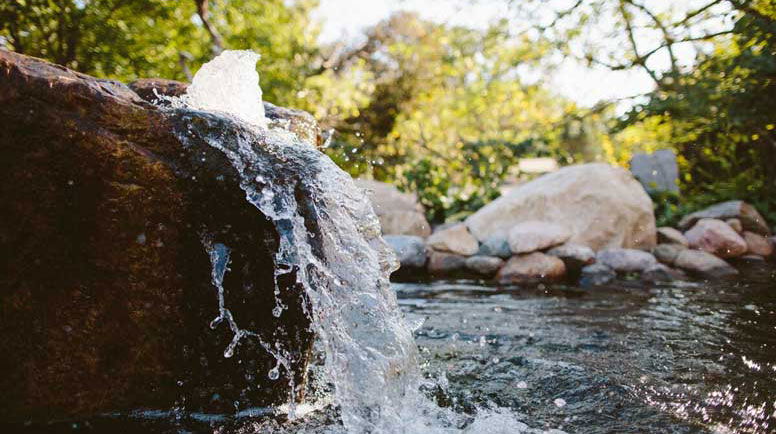DESIGNING A LOW WATER USE YARD
Explore the options for a beautiful, water-friendly landscape
For trusted expertise and superior results,
find a landscape professional near you.

Setting up a rain catchment system is often a small investment of time and money that yields a tremendous payoff. How storm water is handled can make a tremendous difference to your community and to your personal bottom line. Here’s why you shouldn’t let that rainwater (or your money) go down that storm drain.
In any rain event, the water follows a predictable path. When it falls on lawns and planted areas, the water soaks in until the ground becomes saturated, at which point the water runs off downhill. When rain falls on roofs and hard surfaces, the water either adds to the load the lawn and plant beds are dealing with or runs off into storm drains. Along the way, the rainwater picks up pollutants - oil and rubber from cars, debris from rooftops, pet waste, trash - and sweeps it into the storm drains. In some cases, that water is cleaned and treated before being released, but in many cases it goes right into a local river or the bay.
Setting up a rain catchment system can divert a portion of this storm water away from the drains and eventually the waterways. By holding or channeling water to where it can more slowly percolate through the soil, you’re also letting the soil act as a natural filter, cleaning the water as it works its way towards the groundwater.
If the community benefits alone aren’t enough for you, there’s also a cost-benefit reason for you to harvest rainwater. Every gallon of stored rainwater you use is a gallon of municipal water you don’t use. That can add up, especially if you’re in a town where sewer usage rates are estimated based on water usage. Even if you draw your water supply from a well, using rainwater reduces power usage and cycles of use on hard working, critical equipment.
I’m sold! How do I do this, you may ask?
There are numerous ways to integrate rain catchment systems in your home landscape. The simplest way is with rain barrels, which are simply water-holding vessels attached to the ends of your downspouts. For larger scale projects there are cisterns, rain pillows, and even systems that integrate rainwater harvesting with water features. The more water you’re looking at, the more valuable a landscape professional’s guidance can be to make sure your water stays fresh and is stored safely.
Collecting rainwater for use in the landscape is an easy, almost passive way to make a small impact in your community and positively impact your household’s bottom line.
Photo courtesy of Sun Valley Landscapes, Omaha, NE.
We recently updated our Privacy Policy. By continuing to use this website, you acknowledge that our revised Privacy Policy applies.